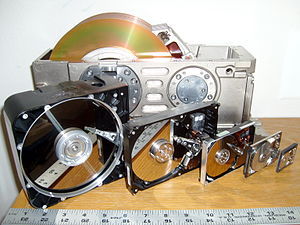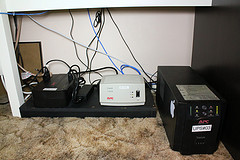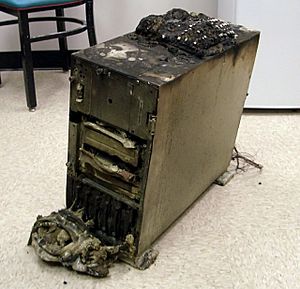The cost of storage hit a low the last time it was time for a storage upgrade. Then prices shot through the roof after a flood in Thailand closed factories.
This shut down all of my hard drives purchases for over two years. When I emerged from my cocoon, Samsung was gone as a Hard Drive manufacturer…and I had bought many Samsung OEM hard drives.
The purpose of RAID in a redundant system is to protect against hardware failure. You have different levels of RAID for this, RAID 1 for just a straight mirror, and RAID 5 and 6, which involve a minimum of 3-4 drives to accomplish.
RAID is important if you care about uptime. If you can afford to be down for a bit, backups are a better choice.
What is being stored, in this case, consists of several categories: Video, Music, Documents, Configuration Files. There is no point in storing complete drive images. The OS can be reinstalled, and it probably will be better off and cleaner running after it is. The OS drive on all of the systems I’ve built or refurbed in the last two years is an SSD, which is a common practice nowadays.
I had been mulling this after reading an article on another hardware refresh by Adam Williamson. He hadn’t refreshed in seven and a half years and used a separate NAS and server. So, why refresh after only two and a half years? Partly it was due to mistakes.
I’d been using WD Green drives. These had several limitations. They park the head after only 8 seconds of inactivity, which increased the load cycle count. The WD Red Drive is designed for 24/7 operation in network attached storage, with a longer warranty, and I now have two 3TB drives. The only other alternative in WD’s stable was a Black drive, their performance drive. It might be time to consider a Seagate, the main competitor, as well.
The warranty situation in hard drives now continues to drop. Five years, down to thee, and down to two years. So there is less protection from the manufacturer and less inclination to create quality products. That was why we were buying OEM over Consumer Drives over the last few years.
Back to the subject at hand…why not a RAID? It is simply a matter of cost vs. benefit. This is terabytes of video data, mostly a DVD archive I intend to create by backing up my DVD collection to MKV. If it were lost, the original copies aren’t going anywhere. But, more importantly, cloud backup is impractical.
Using Amazon S3, for example, at a rate of 9.5 cents a GB, that is just under $100 a month per TB. Amazon Glacier, which is their long-term backup option, is 1 cent a GB, or roughly $10 a TB. But once you take video out of the equation, or sharply reduce it, budgeting $5 a month for important data is a reasonable amount, and still gets you a lot of storage options to work with.
So, to ensure redundancy, there is a second drive in the system, and backups will be done to it. From there, the backups of everything but the video store will be sent up to the cloud. As I’ve mostly given up buying DVDs(due to Blu-Ray), the collection should be fairly static.
Back to Adam Williamson, he had a great idea of having the other computers on the network back up their data to the server, independently isolated by each machine having a separate user account on the server. Not quite there yet, but sounds good. I have other plans to download data from my cloud service providers(Google, Dropbox, etc., and maintain a local backup, but that is a longer-term project. I’m reasonably certain in the interim, Google has a better backup system then I do.
What about off-site then? I still have the old 1TB Green Drives. They can be run through diagnostics, loaded up as a backup, and sent off to a relative’s house…I’ve added a hard drive dock through an E-SATA port to support this.
So in the end, RAID wasn’t necessary for me, but some redundancy was. It may be for you. Comments?
More to come…
Related articles
 Why you shouldn’t backup to an internal hard drive(pcworld.com)
Why you shouldn’t backup to an internal hard drive(pcworld.com)
 The Best External Hard Drives for Backing Up Your Computer Files(thetechscoop.net)
The Best External Hard Drives for Backing Up Your Computer Files(thetechscoop.net)
 Data Backup: Cloud Computing vs. On-Site Options(staples.com)
Data Backup: Cloud Computing vs. On-Site Options(staples.com)




























